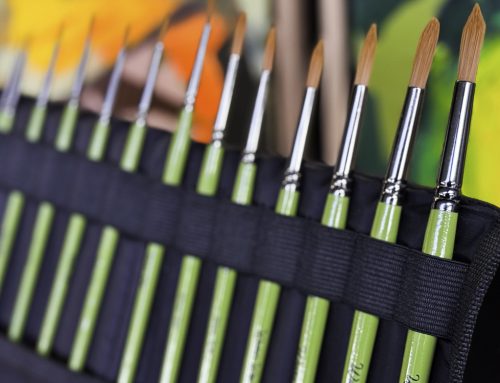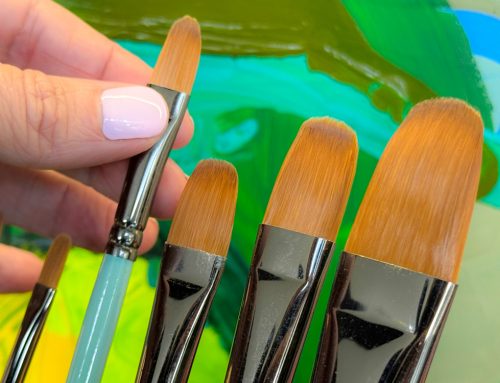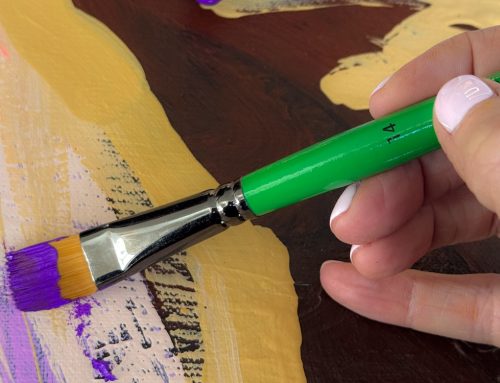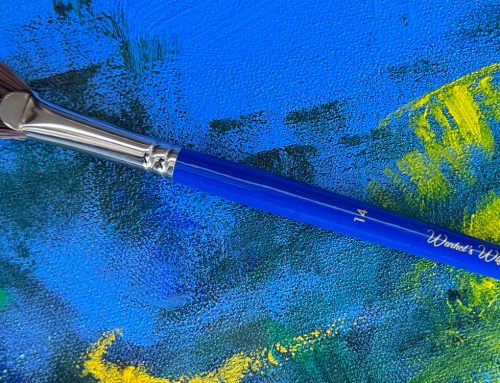A paper stump, also known as a tortillon, is a versatile tool that is essential for anyone working with dry mediums like charcoal, pastel, or pencil. These simple art tools offer an incredible range of uses, from blending and shading to creating depth, texture, and softness in your artwork. With paper stumps, you have the power to enhance your art in unique and creative ways.
What Are Paper Stumps and Tortillons?
The use of paper stumps in art dates back to the Renaissance period, where artists used similar tools made from rolled paper to blend and shade their drawings. Over time, these tools evolved into the paper stumps and tortillons we use today. Paper stumps, sometimes referred to as tortillons (from the French term meaning “nub” or “stub”), are made from soft, compressed paper. They blend, smudge and soften edges in dry media, making them ideal for creating realistic textures in portraits, landscapes, and abstract art. These tools can be found in a range of diameters and tip shapes, allowing artists to achieve different levels of control and precision.
Why Paper Stumps Are a Must-Have
Paper stumps are perfect for blending charcoal, graphite, pastel, and coloured pencils. They allow you to soften lines, create smooth transitions, and add dimension. A small, fine-tipped tortillon is best for detailed work, like drawing eye ducts or hair. On the other hand, larger stumps are suitable for blending larger areas, making it easier to achieve broad, even shading.
These versatile tools have become popular among professional artists, street artists, and hobbyists. If your medium requires blending, adding paper stumps to your kit is highly recommended.
The Art of Using Paper Stumps
Using a paper stump is not just about the tool, but about the skill and knowledge you bring to it. Mastering the angle and pressure of the stump is key to blending effectively. For those new to this tool, practising before using it on a finished piece is helpful. Familiarise yourself with how various levels of pressure impact the medium, and you’ll feel more skilled and knowledgeable in your blending techniques.
Using light pressure allows you to make soft, delicate blends, while increased pressure creates bolder, more dramatic shading. Experiment with angles, too; a shallow angle softens, while a steeper angle allows for sharper, more controlled lines.
Blending Techniques with Paper Stumps
Paper stumps allow for various blending techniques. You can create different tints and tones by blending one colour or deepen shadows by combining multiple colours. For example, blending shades of orange, red, and yellow produces a stunning, realistic sunset. For a seascape, try merging blues and greens. Layering and blending colours this way adds realism and vibrancy to your work.
When working with multiple colours, keep your paper stump clean. Otherwise, colours can blend unintentionally, creating a muddy effect. To ensure a smooth transition between colours, consider using a fresh stump for each colour family, or clean your stump regularly.
Keeping Your Paper Stump Clean and Sharp
A clean and sharp paper stump is crucial for precise blending. Over time, a stump accumulates medium, affecting the cleanliness and accuracy of your shading. Use a sandpaper block or sharpener to clean and refine the tip to keep your stump in optimal condition. This removes any residual medium, preventing unwanted colour transfer to lighter areas of your artwork.
A freshly sharpened stump offers more control, allowing you to blend in smaller spaces precisely. When the stump becomes too blunt, you may notice your blending needs more finesse. Sharpening restores its fine point so you can achieve delicate lines and details again. Regular maintenance allows a quality paper stump to be reused for many projects.
Paper Stump Sizes and Uses
Paper stumps come in various sizes, usually about 15 cm long, making them easy to store in a pencil case or art supply box. The smaller, fine-tipped stumps, called micro tortillons, are perfect for intricate details, like adding highlights or shading small areas. Larger stumps are excellent for expansive areas, like background shading or large areas of gradient blending.
For portrait artists, smaller stumps are useful for adding shadows around facial features, while larger stumps are better suited for smoothing backgrounds. Choosing the right size for each task is essential for achieving precise effects.
Practical Tips for Using Paper Stumps in Your Art
When using paper stumps, it is essential to practice blending techniques to understand how they affect your chosen medium. Here are a few tips for getting the best results:
- Pressure Control: Use lighter pressure for subtle shading and more for intense, bold shadows. Adjusting pressure lets you build layers and add depth.
- Direction of Movement: Move your paper stump in circular motions for softer, blended effects and straight strokes for sharp, defined lines.
- Blending Edges: For softer edges, use the side of the stump; for defined lines, use the tip. This gives you control over how crisp or soft your transitions appear.
- Layering Colours: Try layering one colour over another to create dynamic, realistic effects. For example, blending brown into green can add dimension to leaves or landscapes.
- Use Multiple Stumps: To avoid cross-contamination, keep several stumps handy and dedicate each to specific colour families.
Paper Stumps for Different Art Styles
Paper stumps are useful not only in traditional portrait or landscape art but also in abstract, street, and multimedia artwork. In abstract art, they help create intriguing textures and soften bold shapes. In multimedia work, they can blend pastels or add texture over paint. Street artists often use them to blend chalk or pastel on pavements, achieving a smooth, polished look.
Caring for Your Paper Stumps
Taking care of your paper stumps will help them last longer and perform better. After each use, clean the tip to remove the residual medium, which can interfere with future blending. To clean, lightly sand or sharpen the stump to remove excess pigment. Store them in a case or pouch to protect the tips from being damaged.
Tortillon are affordable and accessible to replace, but with proper care, a single set can last for several projects. Their compact size also makes them ideal for travel or outdoor sketching, so you can blend wherever you are. It is worth noting that paper stumps are made from biodegradable materials, making them a more environmentally friendly choice compared to some other blending tools.
Final Thoughts: Why Every Artist Needs Paper Stumps
Paper stumps may be small, but they are incredibly powerful tools for blending and shading. Whether you are a professional artist, hobbyist, or student, adding tortillons to your toolkit will enhance your ability to create seamless gradients, add depth, and soften edges in your art. They are versatile, easy to use, and suitable for any dry medium, making them an indispensable tool for any creative.
The blending power of paper stumps transforms flat drawings into dynamic, lifelike pieces. From creating soft shadows to merging colours, these tools offer countless possibilities. With various sizes available, paper stumps can handle the most delicate details and the broadest strokes. Embrace the versatility of tortillons and see how they elevate your artistic work to new levels.
VIPurpose Paper Stumps Rewards
With competitive prices and dedication towards our customer satisfaction, we here at Art Materials Australia pride ourselves on providing you with the best paper stumps rewards. Sign up for our VIPurpose points program today and get even better discounts through our store and online purchases on all the art materials you need.
Contact us
If you have any queries, please do not hesitate to contact an Art Materials Australia creative member.
Text: 0411248217
E: orders@artmaterialsaustralia.com.au
Join us: Facebook, Instagram, TikTok, Pinterest or Youtube.






